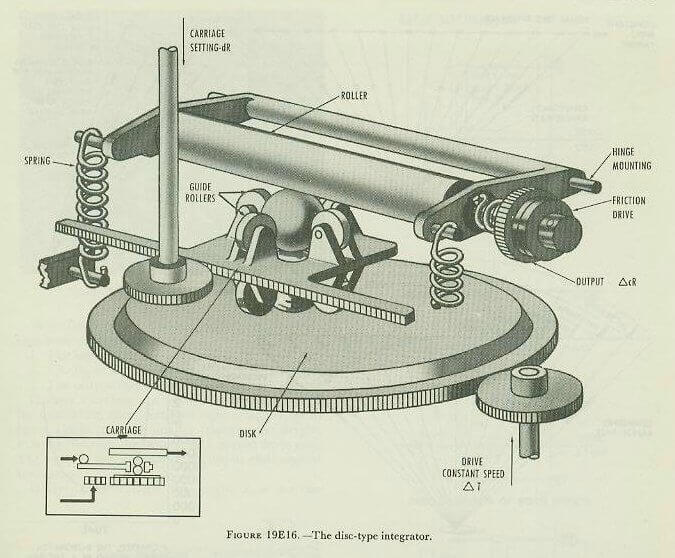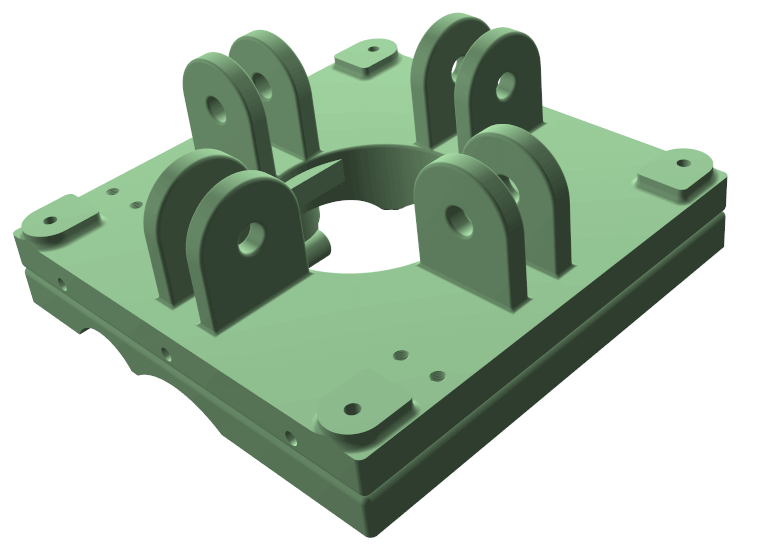Brian's Tidbits: Ball and Disk Integrator
Published : 07/14/2016 12:08:19
Categories : General
One of the joys of using TurboCAD is that it allows me to explore ideas, projects, and hobbies that I would never be able to reach otherwise. One of my hobbies is the study of mechanical computing. I am fascinated by the theory and applications that arose before there were practical digital computers. Especially fascinating are the devices that were created to solve calculations, both specific and general.


The device you are looking at is one of those mechanisms that I recreated in TurboCAD.
It is the carriage and ball components of this Ball and Disk Integrator:

Here is a more rudimentary version:

Ball and Disk Integrators were components of mechanical computers going back more than two hundred years. They were used to perform continual integration on continually changing input values. Integrators were the key component of the Differential Analyser, the first truly successful analog electro-mechanical computers.
DA’s (Differential Analysers) were used from the early 30’s until the mid-50’s. For those older fans of science fiction, and younger fans of old scifi, the computer used in the film “When Worlds Collide” was a real working DA . You can find more about DA’s here:
Ball and Disk Integrators were so ubiquitous in mechanical control systems that they were actually produced by Singer. Yes, that Singer, the sewing machine company. You can see one of their devices in this brochure.
To be fair it was Singers Aerospace & Marine Systems division, but who knew Singer had an Aerospace division?
The Ball and Disk Integrator that I have created came from a U.S. Naval Fire control computer that was still in use on U.S warships up until the 1960’s. On YouTube there is a wonderful U.S, navy training video on the mechanisms used in this fire control computer as you can see here:
Mechanical Computer (All Parts) - Basic Mechanisms In Fire Control Computers
It is a great primer on elements of mechanical computers.
For those looking for more detail you can find the manual for that computer here:
And the maintenance manual here:
Computer Componenents Maintenance Manual
One of the reasons I like modeling devices like this is that they really show the expressive and developmental powers of CAD. In this case the model re-uses many components as blocks, for example these bearings:

All of the parts are also categorized onto layers so that specific parts can be viewed in isolation by type: For example the base plates of the carriage:

Enjoy,
Brian
